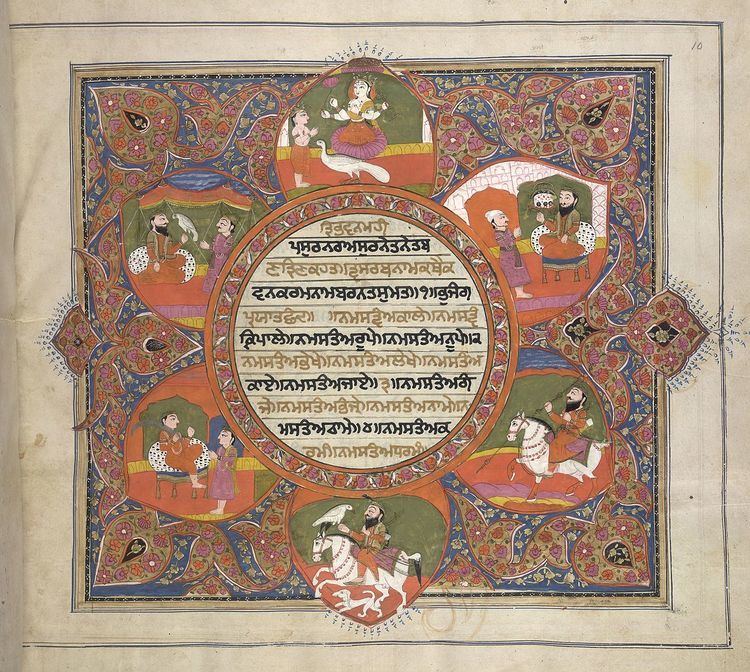 | ||
Hikaitaan (Punjabi: ਹਿਕਾਇਤਾਂ), plural of Hikayat, is a title given to the semi-legendary set of 11 tales composed in the Gurmukhi Persian language whose authorship is historically and traditionally attributed to Guru Gobind Singh. It is the last composition of the second scripture of Sikhs, Dasam Granth, and is believed to be appended to Zafarnamah – The letter to Mughal king Aurangzeb.
Contents
Authorship and relation with Zafarnama
As per early Sikh historical resources, Parchi Patshahi Dasvin (Sevadas, 1741) and Gurbilas Patshahi 10(Kuir Singh, 1751), Hikayats were composed by Guru Gobind Singh at Dina Kangar, Punjab and is part of Zafarnamah which was sent along with Zafarnama. Koer Singh believes that Guru Gobind Singh had written 12 hikayats in Zafarnama. In Sakhi 13, Sevadas mentioned that Guru Gobind Singh had written fables of many kings and also mentioned his own history in Zafarnama.
The historical and traditional view is that all the Hikayats was composed by Guru Gobind Singh himself, to make Aurangzeb realize his folly in breaking oath of Quran, improve his decision-making ability on the basis of facts, and to check the activities of different departments of his government. Pundit Narain Singh, who did an exogenesis of Dasam Granth, also had the same view. Many of these tales are the Persian translations of the narratives in Charitropakhyan, which serves as an additional proof of single authorship of both compositions.
A few modern scholars claim that Hikayats are not part of Zafarnama, as in their viewpoint these tales do not show any relation with the letter. and was written by court poets.
Information
Tales
The following are tales and brief descriptions of the same:
- Tale of Guru Gobind Singh and King Aurangzeb: An autobiography which includes philosophical, political, and satirical aspects.
- Tale of King Daleep and his four Sons
- Tale of King of China: Explaining the qualities of perfect ruler, have Political and Philosophical aspects
- Tale of King Subhat Singh and Bachitarmati
- Tale of King Sabal Singh
- Tale of King Chakrawati and Qazi Daughter
- Tale of King Darab and Queen of Rome
- Tale of Princess of bilistaan
- Tale of King of France and his wife
- Tale of King Mayindra and Advisor's daughter
- Tale of King Sher Shah and Tycoon's daughter
- Tale of Pathan Raheem Khan and his wife: Horror, slasher and weird story, where woman kills her lover, cooks him and serves him to her husband
Relationship with Sri Charitropakhyan
The following is a list of Hikayats which are similar to narratives in Charitropakhyan. In fact, many of these are the Persian translations of the narratives in Charitropakhyan.
The similarity of narratives in Hikayats and Charitropakhyan serves as an additional proof of single authorship.
